Tracking the Menstrual Cycle: Oura Ring & Natural Cycles
A long-term experience with the Oura Ring Gen3 from a woman’s perspective. How can you track the menstrual cycle with a smart ring, and why is it beneficial?
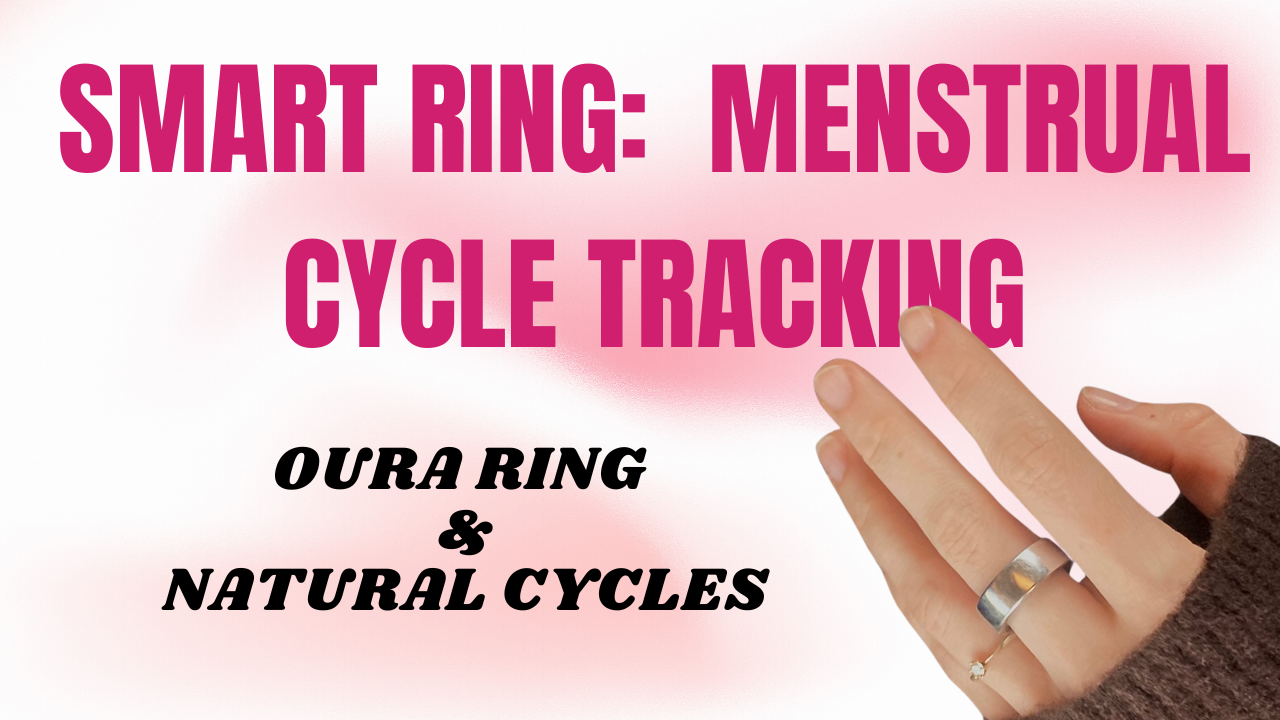
An often-overlooked aspect in smart ring reviews is their specific use for women. Yet, smart rings with temperature tracking fall into a segment of wearable technology that is particularly interesting for women.
Daily temperature variability serves as an excellent indicator of different phases of the menstrual cycle. Additionally, a smart ring is generally very discreet and non-invasive, making it an ideal gadget for women.
In this article, we’ll explore the following⤵️:
- 👩 What is the menstrual cycle?
- ❓ Why is it important to understand it?
- 📐 How can the cycle be tracked? And how does Oura track it?
- ℹ️ What information does Oura provide about the cycle?
- 🌀 The Natural Cycles add-on: Using Oura as a contraceptive tool
👩 The Menstrual Cycle
The bodies of most women of reproductive age operate in cycles with four distinct stages. This sophisticated system prepares the body for potential pregnancy, primarily regulated by the hormones estrogen and progesterone. Each of the four stages is marked by distinct hormonal changes that affect body temperature, heart rate, energy levels, and other aspects of health.
- Menstrual Stage: The cycle begins with the stage most noticeably experienced by women: menstruation. Menstruation generally occurs after the egg in the previous cycle remains unfertilized, leading the body to shed the uterine lining, which causes bleeding lasting from three to seven days. During this stage, estrogen and progesterone levels are at their lowest, which may impact mood and energy levels.
- Follicular Stage: In this stage, the pituitary gland releases a hormone that encourages follicle growth in the ovaries. An egg begins to mature in one of the ovaries, while estrogen levels rise, and the uterine lining thickens. Women often feel more energetic during this stage, which typically lasts 14 to 21 days.
- Ovulation: High estrogen levels lead to the release of luteinizing hormone (LH), causing the most mature follicle to burst, releasing an egg into the fallopian tube. This is the period of highest fertility, lasting 12 to 24 hours. Experiences during this stage vary, but common signs include mild abdominal pain, increased libido, and specific vaginal discharge.
- Luteal Stage: Following ovulation, the luteal stage lasts 11 to 17 days. The follicle transforms into a corpus luteum, which produces progesterone to prepare the uterine lining for possible pregnancy. If fertilization does not occur, the corpus luteum breaks down, progesterone levels decrease, and the menstrual stage begins anew. During this stage, women may experience premenstrual syndrome (PMS) symptoms such as bloating, mood changes, anxiety, and fatigue.
The length of the cycle is typically 21 to 35 days, with 28 days being the average. Significant fluctuations may indicate an irregular cycle, which can be caused by factors such as stress, illness, hormonal imbalances, changes in body weight, or other health issues (e.g., PCOS or thyroid problems).
❓ Why is it Beneficial to Know Your Menstrual Cycle?
Understanding your cycle provides a deeper connection with your body, and there are several specific benefits.
📆 Planning and Optimizing Activities: Different stages of the cycle bring varying energy levels. During the follicular stage, when hormone levels are higher, women often feel energized—making it an ideal time for intense workouts or tackling work challenges. Conversely, the menstrual stage is perfect for rest and recovery.
🩸 Awareness of Menstruation and Ovulation: Predicting menstruation helps with day-to-day planning, while ovulation prediction is valuable for family planning. Women trying to conceive can better time their attempts, while those avoiding pregnancy may use precise cycle tracking as a contraceptive method.
⚕️ Health Monitoring: The cycle serves as a great indicator of overall health. Any significant changes, like irregularities or unusual symptoms, can signal hormonal imbalances or other health issues.
🧘♀️ Understanding Your Body and Emotions: Hormones during the cycle affect not only the body but also the mind. Knowing which stage you’re in can help you better accept mood or energy changes and adjust accordingly, fostering calm and confidence.
It can also be beneficial to share cycle information with a partner. When a partner understands the stage a woman is in, they can better gauge when she's ready for challenges or when to offer her rest. Such understanding can strengthen the relationship.
📐 How Can You Track Your Cycle? And How Does Oura Measure It?
There are several ways to track your cycle.
✏️ The Traditional Method involves recording cycle lengths with paper and pencil or using mobile apps (like Flo) to estimate the next menstruation and ovulation days. This method is simple and low-effort but has limitations. It doesn’t account for factors like stress, illness, or lifestyle changes that can impact the cycle. As it doesn’t capture hormonal changes or body temperature fluctuations—key ovulation indicators—this method is less reliable, especially for women with irregular cycles.
🌡️ Tracking Basal Body Temperature (BBT) is another approach. As mentioned, a woman’s body temperature varies throughout the cycle. It is usually lower at the beginning, rises slightly after ovulation, and then drops again with menstruation. For accurate and meaningful tracking, you need to take your temperature at the same time each morning upon waking, before any physical activity, and consistently—ideally every day. This data needs to be recorded and interpreted.
This temperature-based method is fairly accurate but requires daily discipline and reliability. The Oura Ring also uses this method but differs by automatically measuring temperature and recording data without requiring any input. Once Oura establishes your baseline temperature (which requires wearing the ring for 60 nights), tracking your cycle is as simple as falling asleep with the Oura Ring on and waking up in the morning to check your data.
ℹ️ What Cycle Information Does Oura Provide?
On the main page of the Oura app, there’s a "Cycle Insights" section that includes a temperature graph showing data from recent days. Personally, this graph is one of the first things I check when I open the app—it allows me to see which phase of the cycle I’m in and monitor for any unusual temperature deviations.
Cycle Insights also provide brief daily recommendations, typically related to activity and rest, as well as a forecast for the next menstruation. Oura predicts the next menstruation within a five-day range, and based on my experience, this estimate is reliable. On rare occasions, Oura’s prediction might miss the mark, often due to delayed ovulation or external factors like illness or stress that have impacted the cycle. In these instances, I usually expect minor deviations, and Oura’s data helps me track and better understand these changes (see, for example, the interpretation of the temperature graph below).

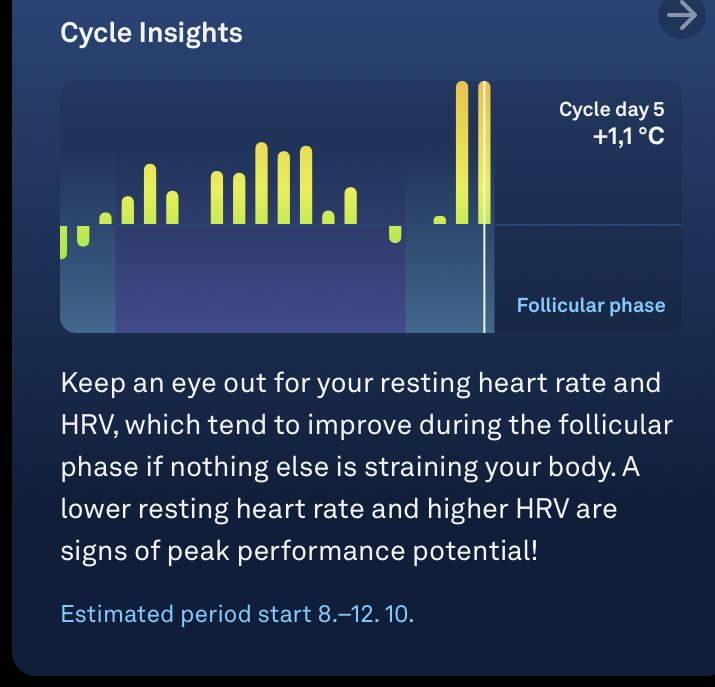
By clicking on "Cycle Insights," you can access additional information. The app provides details about the current cycle phase, temperature graphs, statistics from past cycles, and various infographics. Additionally, Oura has a practical feature for sharing past cycle information with your doctor. With a single click, you can generate a report containing data from the last six cycles, which you can print or send directly via email.

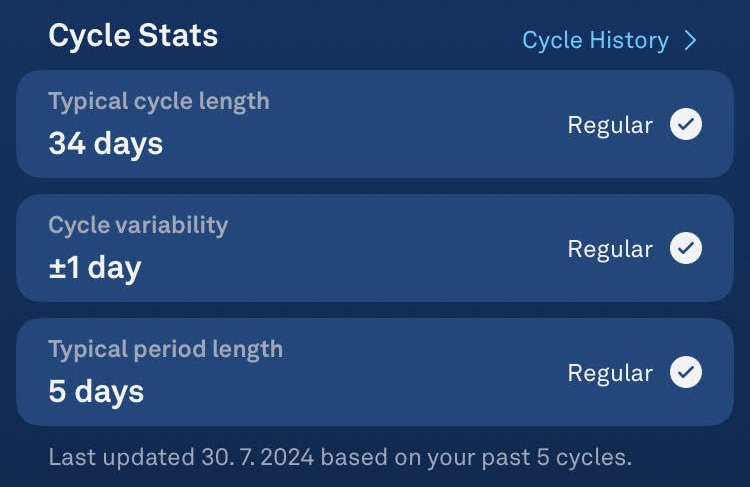

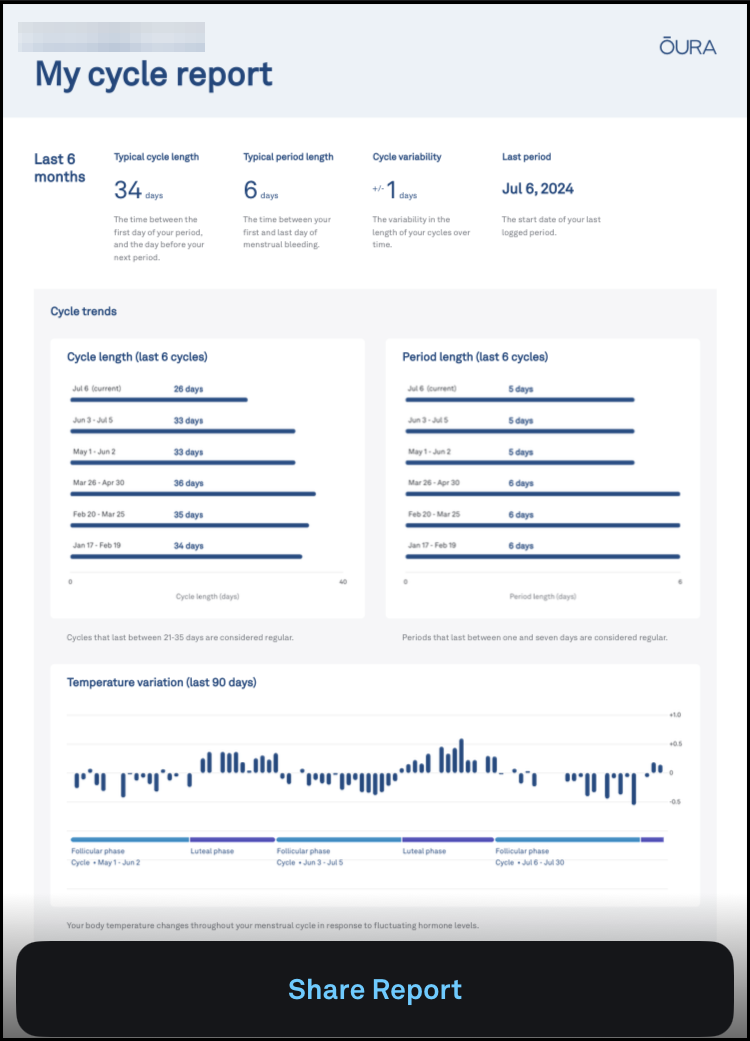
🌀 Natural Cycles Integration
The current version of the Oura Gen 3 app does not provide the date of the next ovulation. While it is possible to predict ovulation based on data from past cycles and confirm it through observed temperature changes (i.e., temperature begins to rise during the follicular phase), Oura is not designed as a contraceptive tool.
For this purpose, Oura can be linked with the Natural Cycles app, which is certified as a contraceptive method. Natural Cycles uses an algorithm that leverages temperature and cycle length data to calculate fertile and non-fertile days.
After synchronizing your data, the app indicates whether you have a red or green day, showing whether there is a possibility of conception on a given day. With regular use and consistent data collection, the predictions become more accurate, allowing the app to “offer” you more green days.
👍 Advantages:
- The first and only app approved by the U.S. Food and Drug Administration (FDA) as a contraceptive method
- 93% effectiveness with typical use, which is higher than the typical effectiveness of hormonal pills (91%)
- Free of hormonal side effects
- Suitable for both pregnancy planning and monitoring
- Offers extended options for tracking symptoms (PMS, libido, and mood changes)
- Automatically excludes elevated temperatures during illness to maintain accuracy
👎 Disadvantages:
- The app is paid
- For irregular cycles, it may classify too many days per month as “red”
- Using the app without the Oura integration requires regular and accurate temperature measurements
- While Natural Cycles has proven itself as a certified method, there have been cases where users became pregnant despite using the app. These instances led to questions regarding its reliability, prompting the app to expand its guidelines and emphasize the importance of correct usage. This realistic view is important for anyone considering Natural Cycles as a primary contraceptive method—as much as it offers a natural approach and is appreciated by many women, it’s essential to recognize that its effectiveness depends on diligent adherence to instructions and proper use.
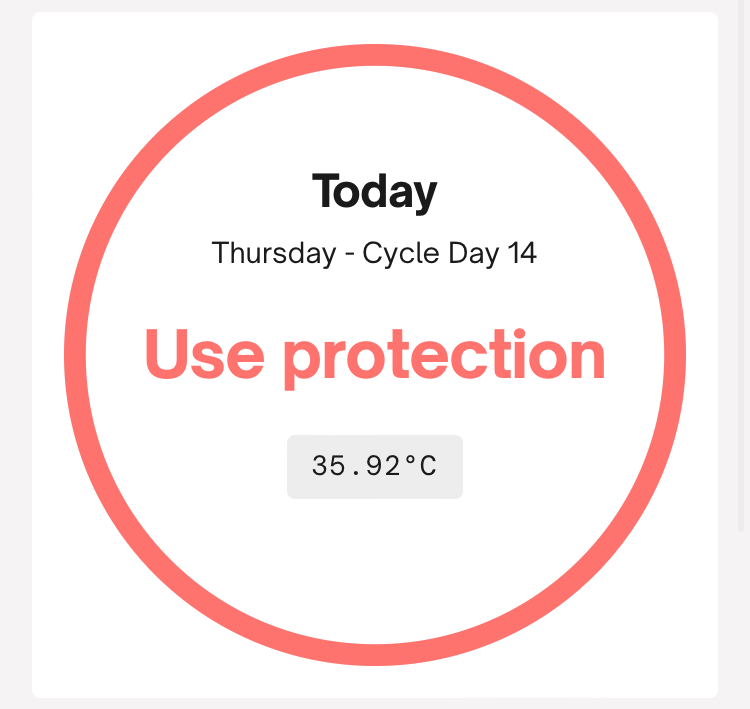


👰♀️ Oura as a Fashion Accessory
While many women find the look of smart rings appealing or are unconcerned with their appearance, some are discouraged from buying due to the ring's bulkiness. Personally, I believe you quickly get used to wearing it. Additionally, you can choose from several color options. If the ring’s appearance is truly a barrier for you, it’s possible to wear it solely as a night tracker. This way, you may miss out on some daytime data insights, but for cycle tracking, nighttime data is sufficient.
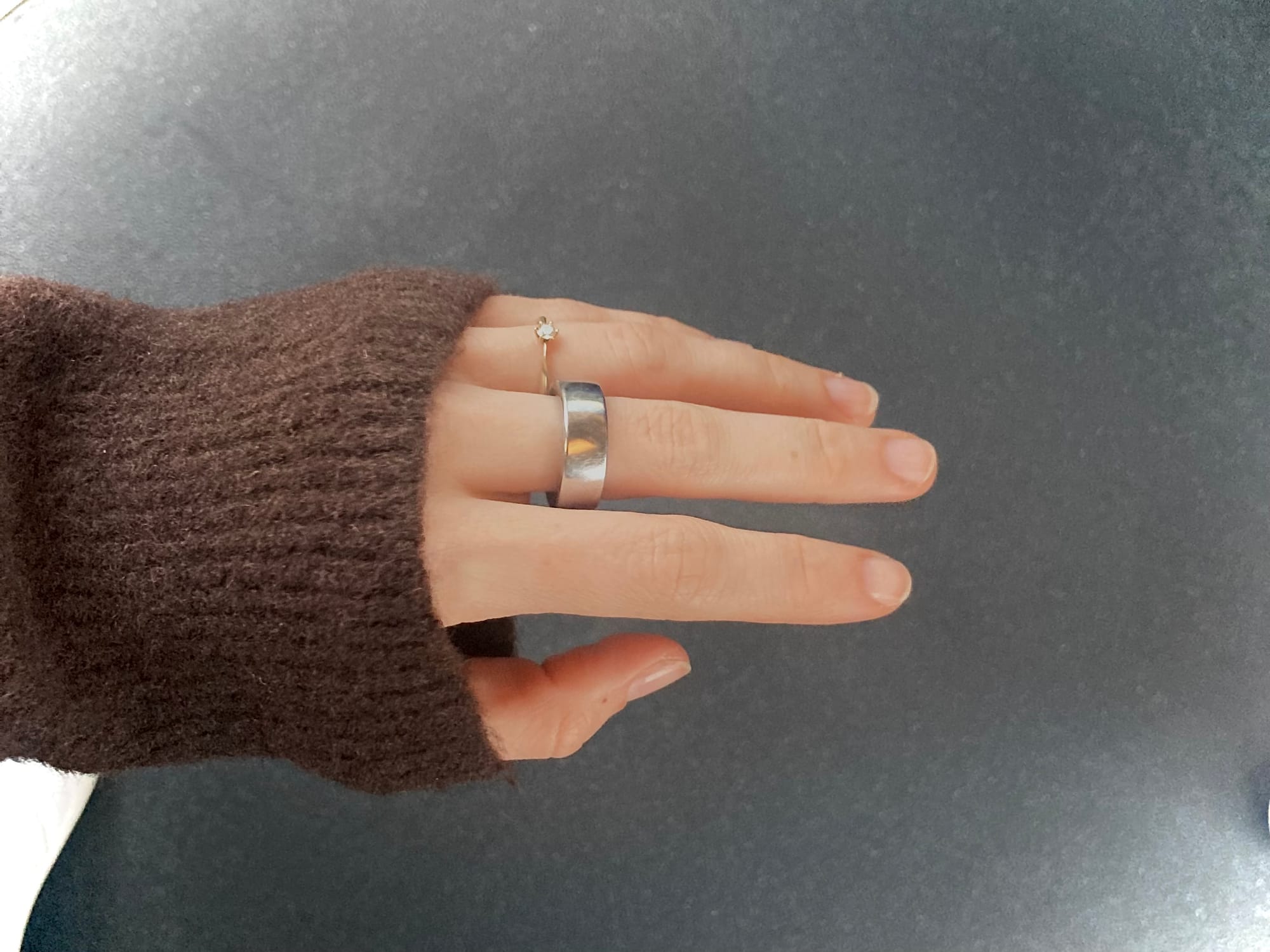
🤔 In Conclusion
Smart rings like Oura offer women the ability to track their cycle with minimal effort and maximum accuracy. Without the need for daily temperature measurements, it’s possible to monitor key cycle stages, such as ovulation and menstruation, and adjust activities accordingly—from exercise to rest.
For women who prefer non-hormonal contraception, the integration with the Natural Cycles app is an excellent option, helping to determine fertile and non-fertile days. This natural approach to cycle tracking can greatly enhance not only a deeper understanding of one’s own body but also contribute to a healthier lifestyle.
Subscribe for free, and you won’t miss the next article on this topic! ✉️




